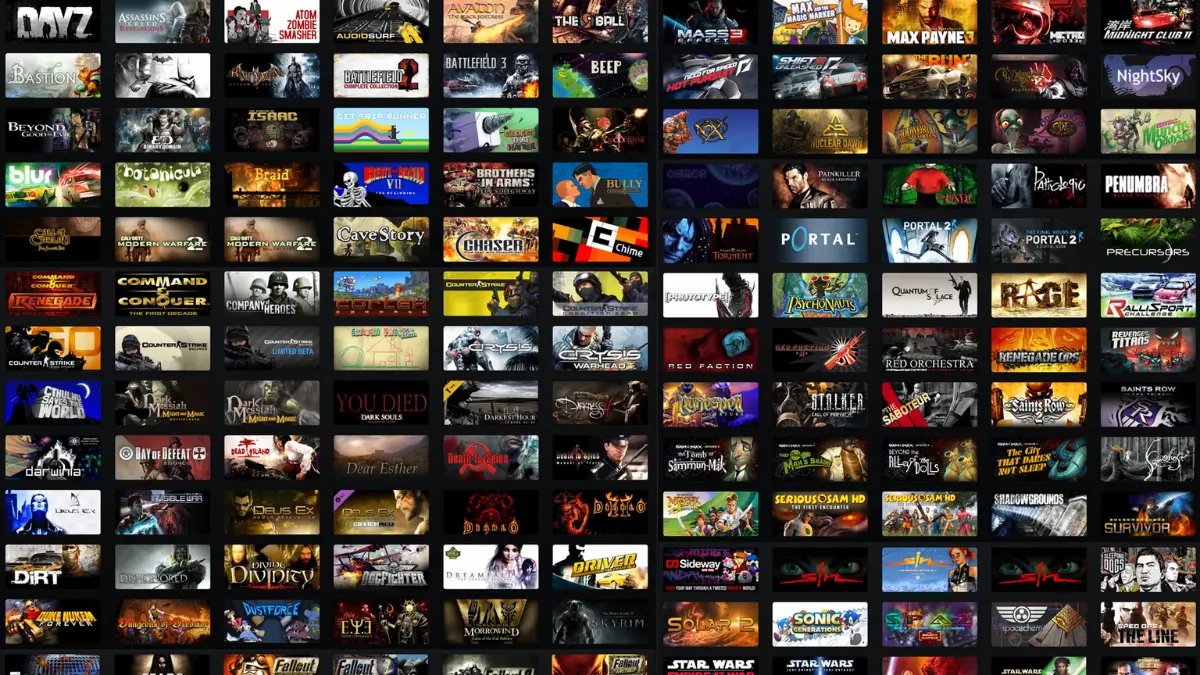New industry research estimates that more than 5,000 games released on Steam in 2025 generated under $100 in revenue. That means roughly one-third of all new releases this year couldn’t earn back the basic $100 Steam Direct fee required to publish on the platform.
According to Gamalytic and Artur Smiarowski, approximately 15,000 games have launched on Steam in 2025 so far. The sheer volume creates a brutal math problem for developers. With dozens of titles releasing every single day, organic discovery has become nearly impossible for most releases.
The revenue breakdown paints a stark picture. At a typical $10 price point, developers net around $7 per sale after Steam’s 30% platform cut. That means a game needs roughly 15 sales just to hit $100 in net revenue. For cheaper titles priced at $5, you’d need about 29 sales to reach that threshold.
Many of these struggling titles fall into recognizable categories. Asset flips, minimal-content projects, and AI-assisted visual novels make up a significant portion. But the problem isn’t just low-quality releases. Plenty of competent indie games with genuine effort behind them also fail to find an audience.
The discoverability crisis hits hardest for developers without marketing budgets or existing communities. One developer commenting on the data shared their experience: “I personally worked on a game for the last two years, published it on Steam and I’m sitting at barely 20 copies. I’m just very bad at marketing.”
Genre saturation makes the challenge even steeper. Categories like Survivors-likes and simulation games see constant releases, forcing developers to compete in crowded spaces where standing out requires more than just a solid game. You need a hook, an audience, or serious luck.
Steam’s open approach to curation plays directly into this dynamic. Valve largely avoids heavy-handed gatekeeping, instead relying on user reviews, tags, and recommendation algorithms. This openness allows anyone to publish, but it also means the platform carries massive volumes of content that most players will never encounter.
Some releases never aimed for commercial success. Student projects, portfolio pieces, and free-to-play titles can inflate the “under $100” count. Developers sometimes publish primarily for experience or resume building rather than profit.
For context, Steam only returns the $100 submission fee after a game reaches $1,000 in gross revenue. So these titles that couldn’t hit $100 fall dramatically short of that recoup threshold. They’re not even in the conversation.
The data relies on observable signals like review counts and public listing information, using industry-standard ratios that estimate sales-to-review patterns. Exact revenue figures aren’t public, so these numbers represent directional estimates rather than precise measurements.
The wisdom of wishlists
Developers who successfully navigate Steam’s crowded marketplace emphasize specific tactics. Wishlists and demo performance during events like Steam Next Fest strongly predict day-one sales. Building Discord communities, creating press kits, and targeting relevant content creators all matter more than ever.
Regional pricing and discount strategies further complicate the revenue picture. A game on sale at 50% off during a regional promotion might need significantly more units sold to reach that $100 mark. Every variable chips away at already-thin margins.
The estimate captures a snapshot in time. Some titles may eventually cross the threshold through updates, seasonal sales, or unexpected influencer coverage. But the initial launch window typically determines success or failure for most indie releases.


